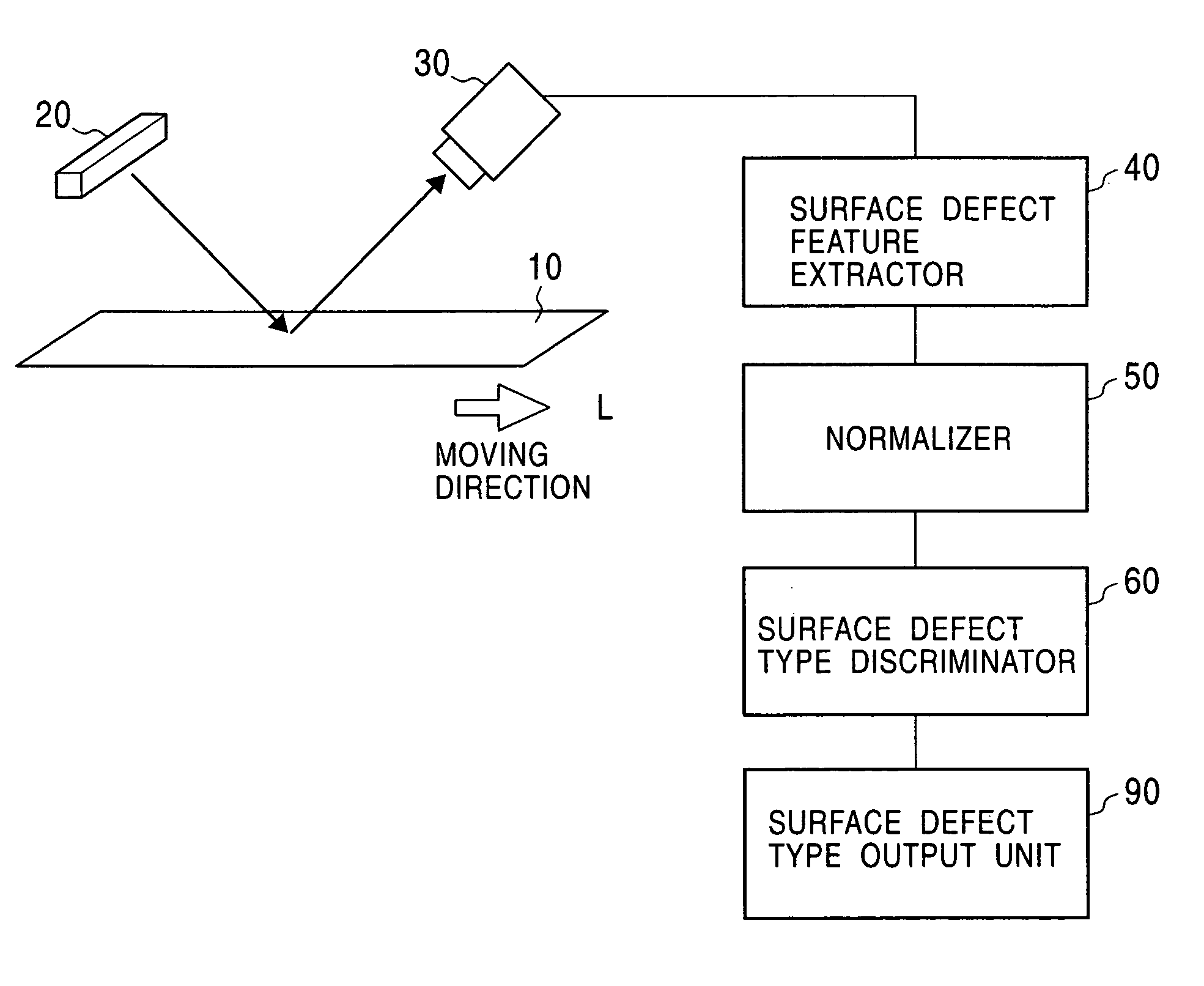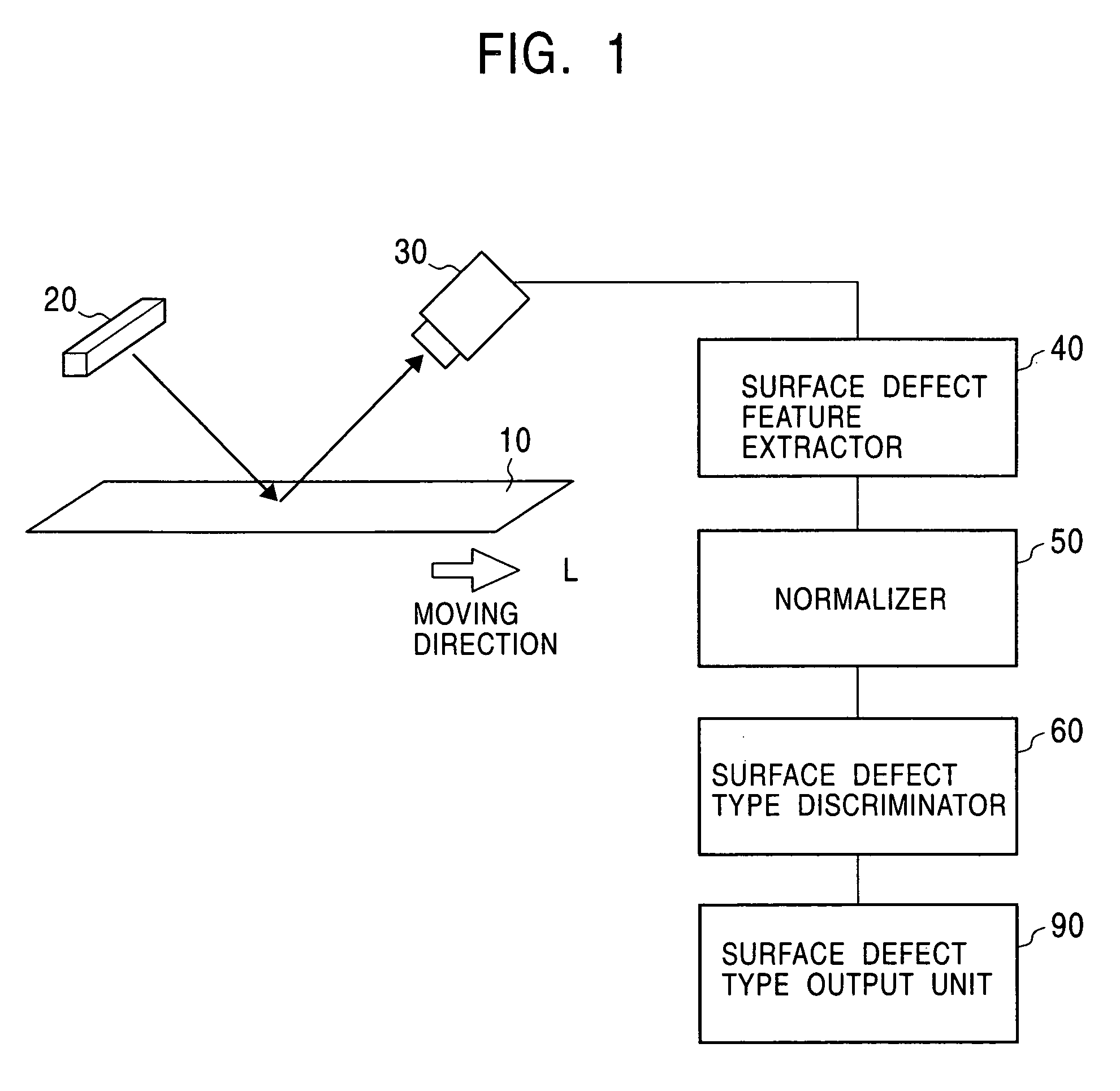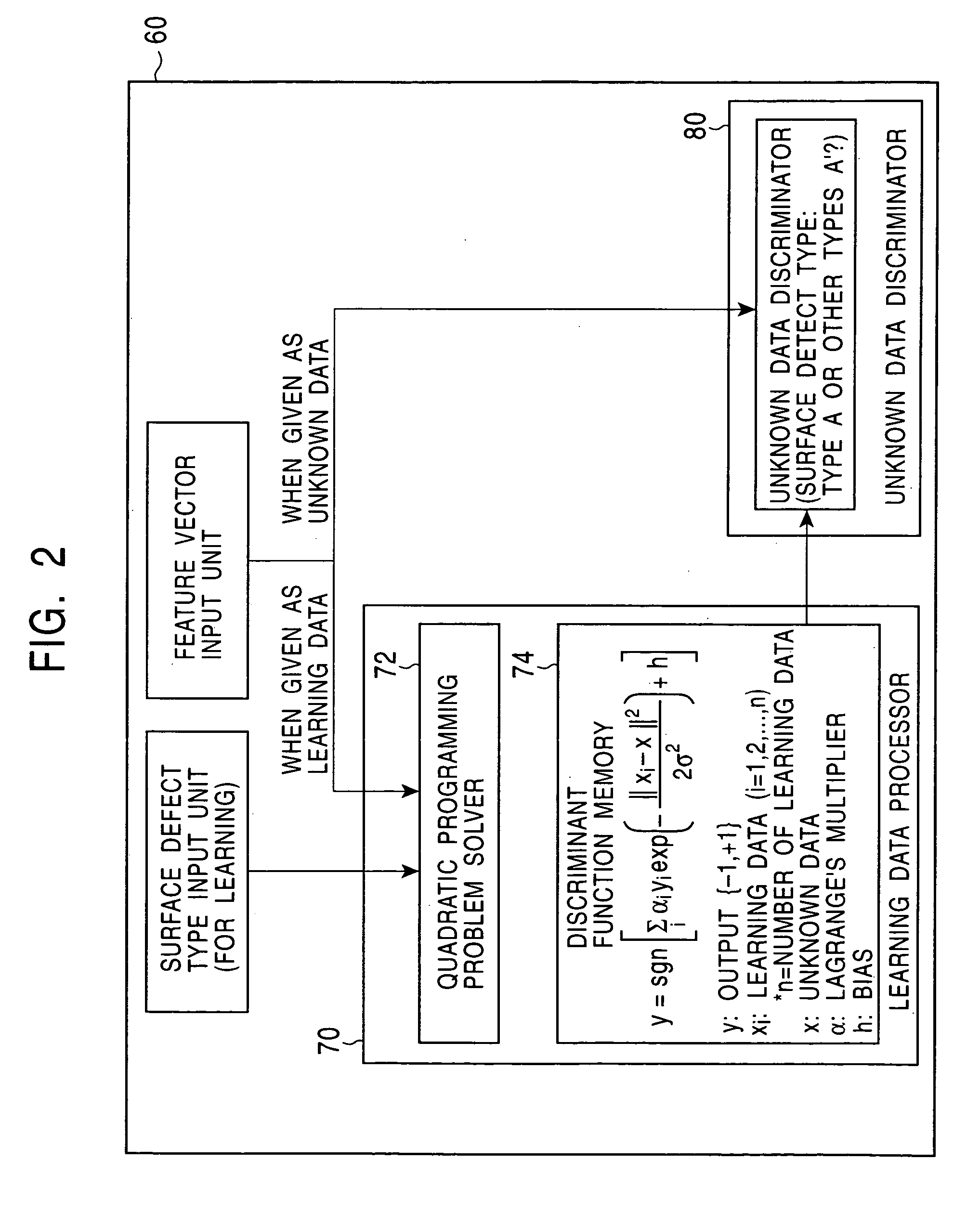Surface defect judging method
a surface defect and judging method technology, applied in the field of surface defect judging method, can solve the problems of long time required to start up the surface defect detection apparatus, difficult to quickly adapt to such a change, and difficult to solve the problem of complicated task
- Summary
- Abstract
- Description
- Claims
- Application Information
AI Technical Summary
Benefits of technology
Problems solved by technology
Method used
Image
Examples
example 1
[0043] The method of learning performed by the learning data processor 70 of the surface defect type discriminator 60 is described in detail below for a case in which the surface defect type A is discriminated from the other surface defect types A′. A feature vector xi of learning data represented as a point in the feature space is mapped by an assumed mapping function Φ as xi→Φ(xi), wherein the mapping function satisfies the following condition.
Φ(xi)·Φ(xj)=K(xi·xj) (3)
[0044] That is, when feature vectors xi and xj in the feature space are mapped by the mapping function Φ to the space Φ, the inner product Φ(xi)·Φ(xj) in the space Φ is equal to the function of the inner product xi·xj in the feature space.
[0045] Herein, i and j respectively denote learning data numbers, that is, [0046] i, j=1, 2, . . . , n (n is the number of learning data)
[0047] It is assumed that, in the mapping, the distance relationship in the feature space is preserved, and it is also assumed that, in the ma...
example 2
[0066] In practice, the distributions of the sets in the feature space are probabilistic, and data can include wrong data (that is incorrectly selected by a human inspector). Therefore, all learning data are not necessarily correct.
[0067] In this second example, in view of the above, the constraint in terms of complete linear separability imposed in the first example is relaxed. More specifically, the feature space is allowed to include a point that can cause an incorrect classification, and a penalty term is added to the objective function used in the first example, as described below.
[0068] In the present example, to allow incorrect classification, variable ξ is introduced into the constraint, and a penalty parameter C imposed on incorrect classification is introduced. Thus, equation (9) is rewritten as follows. objective function: w22+C ∑iξi→maximizedconstraint: yi·[w·Φ(xi)+h]≥1-ξi(18)
[0069] If equation (18) is converted into the form of a dual problem by introduci...
example 3
[0073] In the second example described above, parameters are set such that the accuracy of defect classification for the surface defect type A (the probability that a defect determined to be of defect type A by a human inspector is correctly determined to be of defect type A by the surface defect detection apparatus) is substantially equal to the accuracy of defect classification for the surface defect type A′ other than the surface defect type A (the probability that a defect determined to be of defect type A′ by a human inspector is correctly determined to be of defect type A′ by the surface defect detection apparatus). In some applications, a particular type of surface defect can cause a very serious problem, and thus it is necessary to correctly detect such a type of surface defects without missing them. In this case, it is desirable to improve the accuracy of defect classification for that type of defects even if this results in a reduction in accuracy of defect classification ...
PUM
| Property | Measurement | Unit |
|---|---|---|
| surface defect classification | aaaaa | aaaaa |
| distance | aaaaa | aaaaa |
| surface defect classification method | aaaaa | aaaaa |
Abstract
Description
Claims
Application Information
 Login to View More
Login to View More - R&D
- Intellectual Property
- Life Sciences
- Materials
- Tech Scout
- Unparalleled Data Quality
- Higher Quality Content
- 60% Fewer Hallucinations
Browse by: Latest US Patents, China's latest patents, Technical Efficacy Thesaurus, Application Domain, Technology Topic, Popular Technical Reports.
© 2025 PatSnap. All rights reserved.Legal|Privacy policy|Modern Slavery Act Transparency Statement|Sitemap|About US| Contact US: help@patsnap.com



